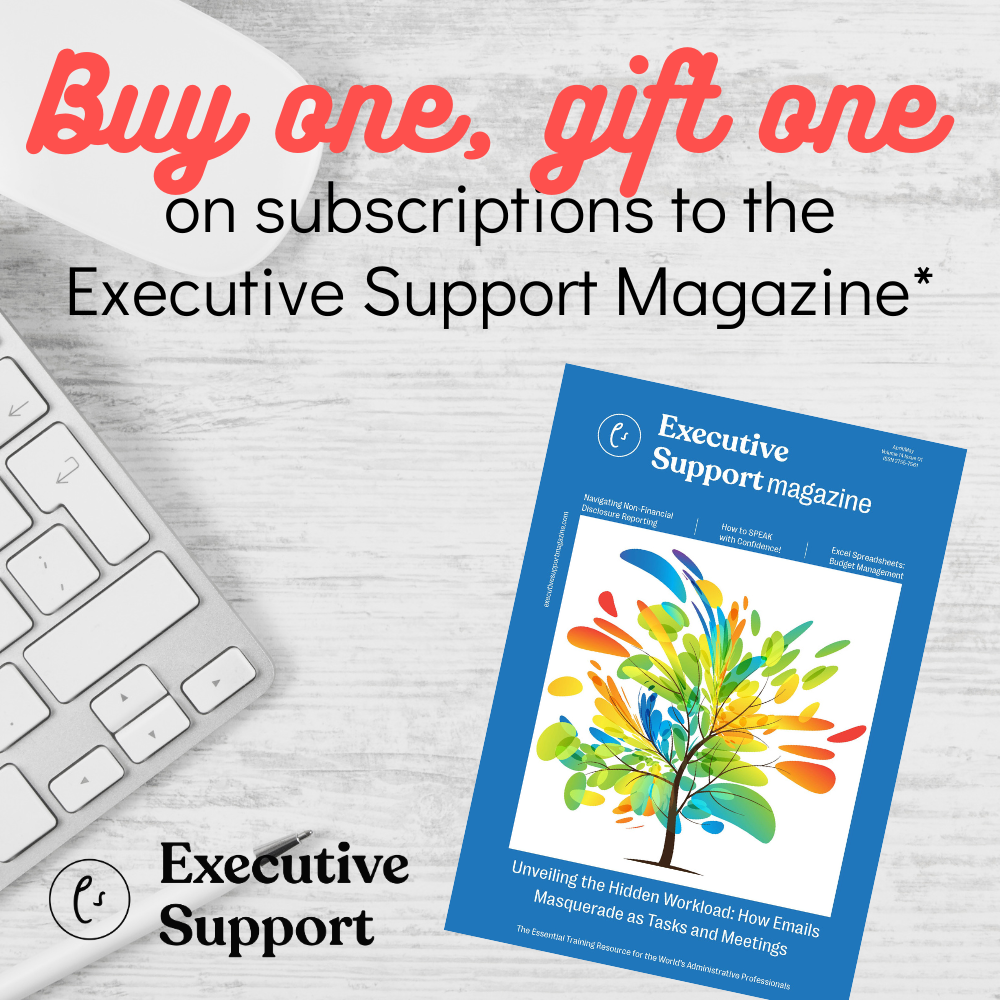
Having a leadership purpose is like knowing that your work counts and that you matter says Julia Schmidt
A large number of researchers have identified many leadership theories in the last 80 years to help train leaders. One of these topics is the importance of purpose in effective and successful leadership. Recently, Emma Russell and Chris Underwood published an article in the UK HR Magazine confirming that the common link to all highly effective leaders is a clear sense of purpose. Other key findings are that:
- Leaders that lead with purpose “own” their standards for success, and are focused on objectives beyond task, job role or immediate business needs.
- Leaders with purpose define success as more than business and financial goals. They want to leave a legacy.
- Those having a strong and clear sense of purpose do not need to share it with all members in the organization, but leaders need to translate their goals and objectives into something meaningful for their teams, co-workers, customers and stakeholders.
We have all experienced situations in life where we feel lost and did not know where to go or how to accomplish what we wanted. Organizations and individuals willing to succeed understand the meaning of their actions and projects; it is the key to attaining exceptional performance and creating meaningful jobs. We are all searching for meaning, and more than ever the value of authentic leadership purpose is being mentioned in articles and leadership programs.
In this article, I want to share with you my own process in defining my leadership purpose and hope it will help you improve your effectiveness and create great results. If you have already received guidance regarding your leadership purpose, I suggest you read this article as a reminder and re-think your current standards.
A call to action
Leadership purpose is not only for executives and managers. Any assistant, willing to make a difference, has to have a clear understanding of their personal purpose and consequently leadership purpose. An authentic leadership purpose is connected to personal purpose and values. They are not merely statements; authentic leadership purposes have to lead to smart goals and actions, and create positive results. They create growth. They are an invitation to action!
During leadership training I attended with my executive team, I re-discovered the importance of giving meaning and purpose to what we do. When you identify your values, priorities, and goals, you make yourself ready to design your own success. It is like planning your trip and choosing a destination before you start the journey. In the process of creating my leadership purpose, I went through two phases:
- Imagine and visualize the outcome I wanted to accomplish – visualizing my success.
- Identify what I want to be and do to accomplish the outcome – creating my mission of statement and leadership purpose.
Visualizing my success
Dr. Charles Garfield has done extensive research on peak performers, both in athletics and in business. One of the main things his research showed was that almost all world-class athletes and other peak performers are visualizers.
If you want to win the game, focus on the image of you winning the game!
Positive thinking combined with visualization is still a great way to help you improve your performance. If your challenge is more mental than physical, such as presenting a talk or leading a meeting, visualization can keep you calm and focused. If you want something to go right, create an image of success and condition your neural pathways so that the action feels familiar when you go to perform.
It does not work like magic; it is something that will give you confidence and help you reach your potential. If you do not speak Portuguese, you will not speak the language by visualizing yourself as a Portuguese teacher. Visualization is combined with practice. It has to be a story about a successful performance. You have to use all senses in projecting a holistic picture of what you want to do, to be, in life. You have to train your brain to believe in what you believe. You are saying to yourself that you will be a winner, you will make a difference, and you will be a significant player.
Creating a mission statement
We each have different roles in our lives and we have responsibilities in different areas. I may have a role as an executive assistant, board member, wife, daughter, sister, neighbor, colleague, church member and more. And each of these roles is important. I am a collection of roles and therefore my goals have to embrace all the functions I have in society. My professional success depends on my personal life. My personal success is part of my professional performance.
A mission statement becomes a framework for thinking, for governing your acts and behavior. Just as many organizations put their vision and mission statement on a wall and website, we need to do the same with our personal mission statement. Just as a company plans its strategy and activities based on the organization’s mission, we all as individuals have our action plans anchored on our mission statement. A mission statement is based on values and priorities. It is unique, individual, and aligns behavior with beliefs.
A mission statement describes an organization’s purpose and is related to the questions “What business are we in?” and “What is our business for?” A vision statement provides strategic path and defines what the owner or founder wants the company to achieve in the future. Organizations willing to succeed need to know where they are going or why they exist. We, as individuals, also need to know our “why”, “what” and “how”.
Finding my leadership purpose
During my leadership training, I was invited to think about my values, leadership purpose and personal responsibility for bringing positive results and positively impacting the work environment. The primary objective of the session was to write down my leadership purpose, which is no different from my personal mission statement. They represent the unique and singular contributions that I can make to live a proactive and effective life; both privately and professionally.
To find my leadership purpose I started by visualizing my success. To do that I decided to make a clear script of how I would like to be remembered after leaving my work for retirement. Which qualities I would like people to identify with my work and contribution? What type of legacy do I want to leave? How would I have made a difference in people’s lives?
So I started by identifying the values upon which being and doing are based. After that, I went through an incredible journey that brought me to the heart of my living and working purpose.
What are my values?
- Honesty
- Loyalty
- Commitment
- Quality
- Structure
- Freedom
- Respect
What do I want to contribute to the organization?
I want to maximize the productivity of my executives and teams.
What is my desired impact?
- Create a partnership between Executive & Executive Assistant
- Make a difference to my executives
- Inspire and motivate my teams
- Do the work they delegate to me and allow them to dedicate their time to core business
- Read the mind of my executives
And I asked the following of my executives:
To help me attain my desire impact, please:
- Delegate
- Communicate
- Trust
- Share your goals and priorities
- Give feedback
Explain the WHY and I will help you win!
What is my leadership purpose?
I will continuously and consistently develop and facilitate the growth and development of myself and others leading to great performance and positive results.
To fulfill this purpose:
I will be collaborative, innovative and committed to give and receive feedback in my one-on-one meetings, and be involved in different projects.
I will be task and results oriented by identifying improvement areas monthly and suggesting solutions.
I will strive for excellence and bring structure to the chaos by creating new administrative procedures annually.
I will inspire and help people grow by creating sharing and learning sessions in my department.
Living my leadership purpose
This exercise helped me to determine where I am and gave me valuable information on how to get there. It gives me the energy to continue on the journey of success I am visualizing. It is giving meaning to all I do.
Defining my leadership was a process that included introspection and reflection. I went through my education, skills, life experiences, dreams, feedbacks and performance reviews. I listed my values and main personal and professional objectives. All of that was to ensure an authentic leadership purpose that would be practiced daily.
My actions count much more than my words. My statement has to create impact in the workplace and influence my teams. Therefore, I am constantly updating my action plans in order to practice my purpose daily. I look forward, focus on strengths and realize career aspirations, search for new skills, improve performance, align my purpose with my executive’s goals, and have a holistic view of family and work.
My personal and professional goals reflect my leadership purpose, which in turn represents who I am and makes me distinctive. This is crucial to create engagement and excellence.
My work is important! And I do matter!














Julia – I really enjoyed reading this article, and will share it widely. Too many administrative professionals assume they are in a “follower” position by the nature of their job, and never even consider how an owner mentality can help them perform better at work while increasing their job satisfaction exponentially. Thank you for this thoughtful sharing! – Tara Browne
Dear Tara Browne, thank you for the feedback. I am glad you enjoyed the article. Let’s believe in our potential to become great leaders. We are leading, maybe not every time, but more often than we believe. Let’s lead guided by our professional mission and values.